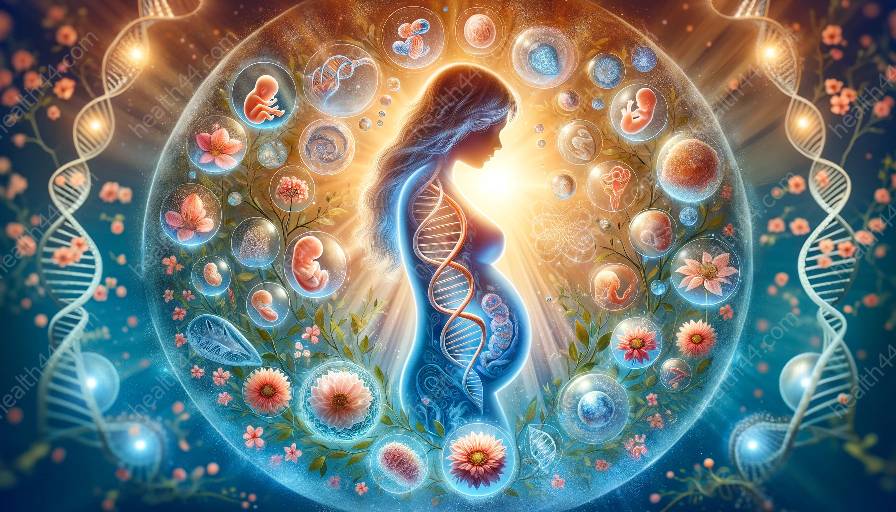During fetal development, the intricate process of musculoskeletal system formation relies on the crucial role of fetal movement. These movements play an essential part in influencing the growth, strength, and structure of the bones and muscles. As the fetus responds to the surrounding environment within the womb, various movements and stimuli contribute to the overall development of the musculoskeletal system.
Fetal Development and Fetal Movement
Before delving into the specific ways in which fetal movement aids in musculoskeletal development, it's important to understand the stages of fetal development and how movement begins to play a pivotal role.
Early in gestation, the musculoskeletal system, which comprises the bone and muscle tissues, starts forming. At around 8 weeks of gestation, the first signs of limb development become apparent, and by 10 weeks, the bones begin to ossify and develop cartilage. Throughout this period, the fetus starts to exhibit subtle movements, which become more pronounced as the pregnancy progresses.
By the second trimester, the fetus begins to actively flex and extend its limbs, kick, and perform a range of movements due to the development of the musculoskeletal system and the central nervous system. This is a critical phase during which the impact of fetal movement on musculoskeletal development becomes increasingly significant.
The Influence of Fetal Movement on Musculoskeletal Development
The musculoskeletal system consists of bones, muscles, cartilage, tendons, and ligaments. Fetal movement contributes to the development and strengthening of these components in various ways:
- Bone Development: Fetal movement stimulates bone growth and mineralization. The stress and strain of movement experienced by the fetus are essential for bone mineralization, which helps in the formation of strong and healthy bones. In the absence of fetal movement, the bones may be prone to weakness and insufficient mineralization, leading to developmental problems such as reduced bone density.
- Muscle Strength: As the fetus moves and exercises its muscles, it aids in muscle development and strength. The repetitive contractions and relaxations of the muscles during movement help in the proper development and toning of muscle tissues. Additionally, fetal movements stimulate the production of proteins that are essential for muscle growth and function.
- Joint Formation: Fetal movement also influences the formation and alignment of joints. The range of movements performed by the fetus helps in the proper development and alignment of joints, ensuring that they function effectively after birth.
- Neuromuscular Coordination: The coordination of muscle movements and neurological connections are refined through fetal movement. The interactions between the developing muscles and the nervous system during movement play a crucial role in establishing neuromuscular coordination, essential for movement and posture control after birth.
Effects of Limited Fetal Movement on Musculoskeletal Development
Restrictions in fetal movement, due to various factors such as maternal health conditions or fetal abnormalities, can have detrimental effects on musculoskeletal development. Limited movement patterns may lead to challenges in bone and muscle development, leading to conditions such as reduced muscle tone, joint contractures, and skeletal malformations.
Fetal movement acts as a form of prenatal exercise for the developing musculoskeletal system, and restricted movement can impede the natural processes vital for healthy development. It is essential for healthcare providers to monitor and address any concerns related to decreased fetal movement to ensure optimal musculoskeletal development.
Conclusion
The role of fetal movement in musculoskeletal development is a testament to the intricate and interconnected nature of fetal development. The range of movements and stimuli experienced by the fetus within the womb plays a crucial part in shaping the musculoskeletal system, influencing the growth, strength, and functionality of bones and muscles. Understanding and appreciating the impact of fetal movement on musculoskeletal development can guide prenatal care practices and further research, ultimately promoting the healthy development of infants. As we continue to unravel the complexities of fetal development, the significance of fetal movement in musculoskeletal development remains a captivating area of study with profound implications for maternal and child health.


